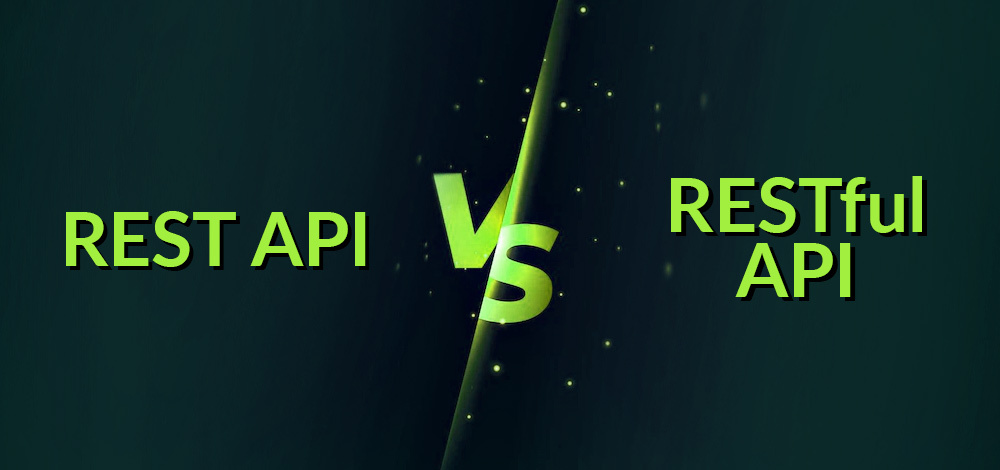APIs (Application Programming Interface), which stands for Application Programming Interfaces, serve as a bridge between two software applications, enabling them to communicate and exchange pertinent information. They rely on a specific set of protocols to facilitate these interactions. Salesforce holds the distinction of being the pioneer in introducing APIs, with eBay and Amazon subsequently following suit. Notably, a significant 60% of transactions conducted on eBay leverage their APIs. When considering the expansion of API usage, it's noteworthy that nearly two-thirds of organizations now depend on APIs, and their popularity has surged by a staggering factor of 13 since 2007.

Let’s understand this better with the help of an example. Imagine you’re extremely hungry, you order food from an online food delivery app (take the example of Zomato) and there’s no tracking system to track your delivery boy. In that case, you would never know where your delivery boy is? There comes API with the rescue. In this scenario, Zomato requests location access from Google Maps through APIs, and a response is sent to Zomato from where we can track the location. APIs act as a mediator between two applications which provides interactions between them.
After knowing all these things about API, let’s dig deeper and know more.
But, before reading about API, let’s know what is web services and how is it connected to API?
Web Service uses a collection of open-source protocols to exchange data between applications whereas API acts as an interface between two applications to facilitate interaction with each other. The key difference is web service supports only HTTP while API supports HTTP/HTTPS protocol. A type of API is a web service.
Note: All Web services are APIs but all APIs are not web services.
There are two types of web services used mostly i.e., SOAP and REST
- SOAP (Simple Object Access Protocol) is a protocol designed to exchange data with the security of programs that are built on different platforms or using different programming languages. To get more information about SOAP click here.
- REST (Representational State Transfer), is an API that follows a set of rules through which applications and servers communicate. It was specifically designed for working with components like files, objects, and media components.
REST uses HTTP requests like GET, PUT, POST, and DELETE to manage CRUD (Create, Read, Update, and Delete) operations. When you start reading about REST, you would also like to read about RESTful and know the differences between them. While REST is a set of constraints, RESTful is an API adhering to those constraints.
Advantages of REST API:
- REST API is a lightweight and flexible architecture that can be easily implemented on any platform or language.
- REST API is stateless, which means that each request contains all the necessary information to complete the request. This allows for scalability and reduces the load on the server.
- REST API is widely adopted and supported by most modern programming languages and frameworks.
- REST API provides a simple and standardized way of accessing resources over the internet.
Disadvantages of REST API:
- REST API may not be the best choice for complex business logic and workflows.
- REST API can be difficult to implement in certain situations, especially when dealing with complex data structures.
- REST API does not provide a built-in authentication or authorization mechanism, which means that developers must implement their own security measures.
Advantages of RESTful API:
- RESTful API is a standardized implementation of the REST architecture, which makes it easier for developers to build and maintain web services.
- RESTful API provides a uniform interface for accessing resources, which simplifies the development process.
- RESTful API supports caching, which can improve performance by reducing the number of requests sent to the server.
- RESTful API can be used with a variety of data formats, including XML and JSON.
Disadvantages of RESTful API:
- RESTful API may not be suitable for complex business logic and workflows.
- RESTful API can be difficult to implement in certain situations, especially when dealing with complex data structures.
- RESTful API can be slower than other web service architectures, especially when dealing with large amounts of data.
Similarities between REST API and RESTful API:
- Both REST API and RESTful API are based on the REST architecture.
- Both REST API and RESTful API are stateless, which means that each request contains all the necessary information to complete the request.
- Both REST API and RESTful API provide a simple and standardized way of accessing resources over the internet.
Difference Between REST and RESTful API
Factors | REST API | RESTful API |
|---|---|---|
| Define | Develops APIs to enable client-server interaction. | Web application follows REST architecture, providing interoperability between different systems. |
| Working | Uses web services and is based on request and response. | Working is completely based on REST applications. |
| Nature | Highly adaptable and user-friendly | Too flexible |
| Protocol | Strong protocol and is more secure, built-in architecture layers. | Has a transport protocol, is less secure as compared to REST. |
| Architecture | Has a cacheable, client-server, stateless, layer system with a uniform interface. | All features of REST architecture along with some additional unique features. |
| Format of Data | Format of data is based on HTTP. | Format of data is based on HTTP, text, and JSON. |
| Bandwidth | This consumes minimum bandwidth. | This consumes less bandwidth. |
| Cache | It represents cacheable and non-cacheable data and displaces the non-cacheable data when not required. | The client can access cacheable information anytime and anywhere. |
Conclusion:
While REST API and RESTful API are often used interchangeably, they have distinct differences. REST API is an API that follows the principles of the REST architecture, while RESTful API is an API that follows the principles of the REST architecture and meets specific requirements. Understanding the differences between REST API and RESTful API is essential for choosing the right API for your web application and achieving optimal performance and user experience.











No comments:
Post a Comment